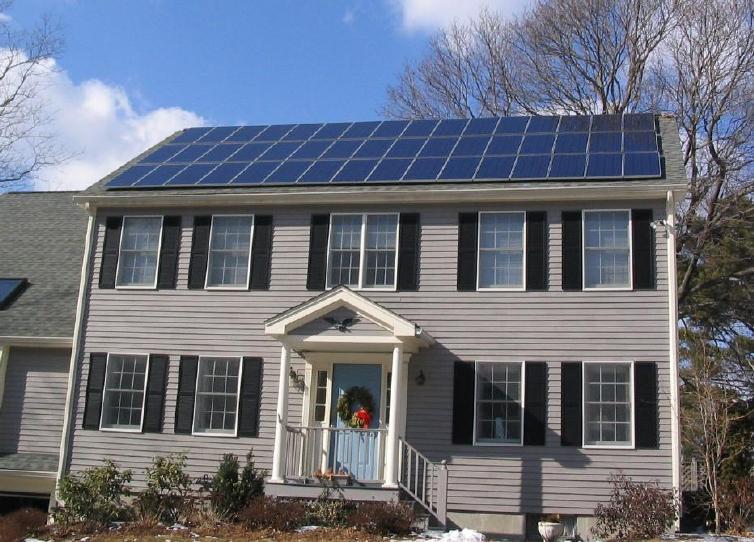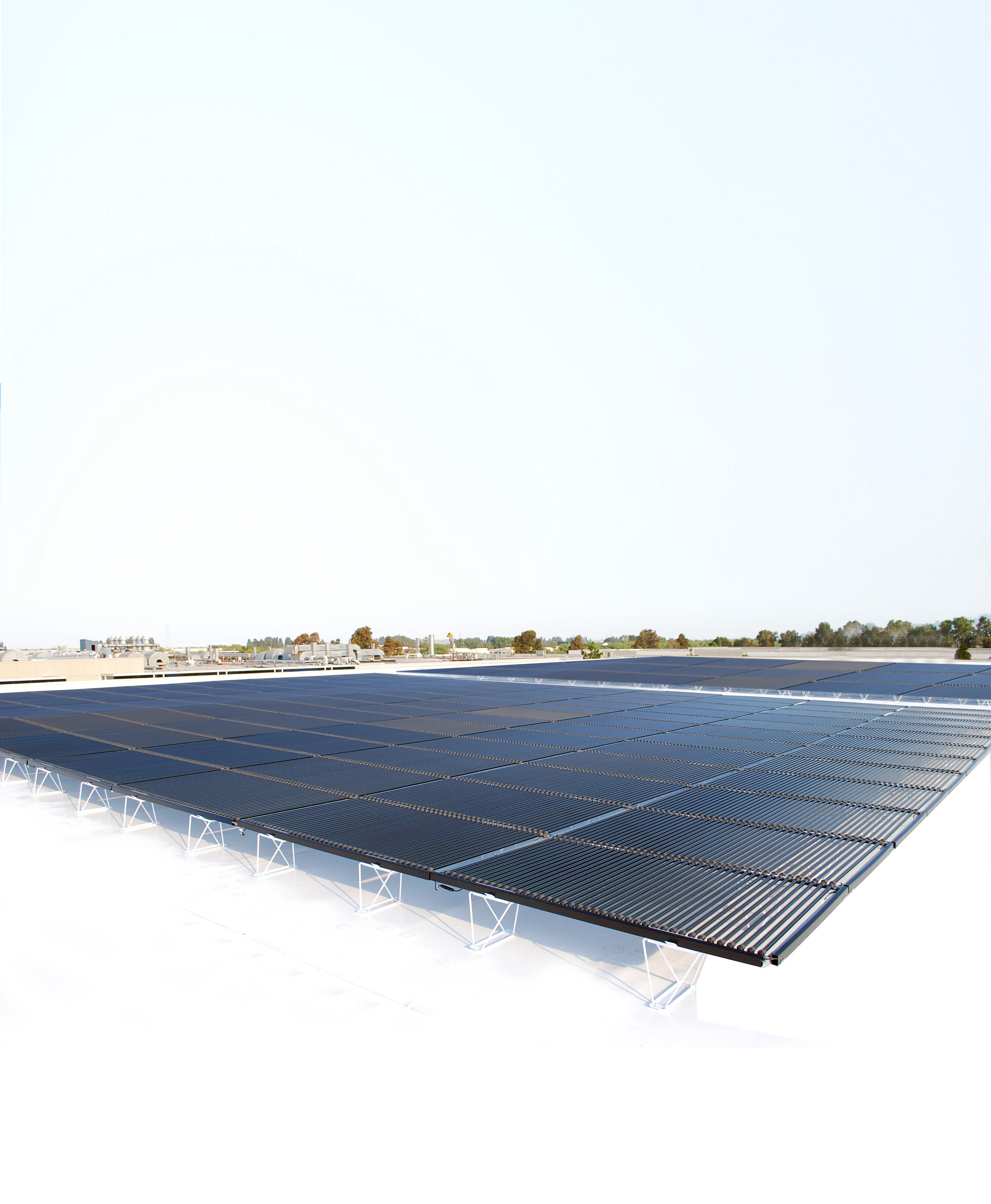Solar Power in Southampton's Structures
Interview with
Diana - You might think that solar cells work best when you pack in as many of them as possible - but this isn't always ideal. We sent Meera Senthilingam out to find out how cleverly designing solar cells into the structure of a building can make them multitask. So as well as offsetting some of the energy demands, they can also act as a shade to keep down air conditioning costs in the summer and as a roof to keep out the rain.
 Meera - This week, I'm at the Highfield Campus of Southampton University in the George Thomas building which is their student services building. The reason I'm here and what makes this building so special is that it has a photovoltaic atrium. This building, as well as a few other buildings here on campus, are powered or partly powered by solar cells. Here to tell me a bit more about the design of this building and just how much electricity it produces is Patrick James from the sustainable energy research group here at Southampton. Now Patrick, this photovoltaic atrium is quite impressive. Tell me a bit more about the design.
Meera - This week, I'm at the Highfield Campus of Southampton University in the George Thomas building which is their student services building. The reason I'm here and what makes this building so special is that it has a photovoltaic atrium. This building, as well as a few other buildings here on campus, are powered or partly powered by solar cells. Here to tell me a bit more about the design of this building and just how much electricity it produces is Patrick James from the sustainable energy research group here at Southampton. Now Patrick, this photovoltaic atrium is quite impressive. Tell me a bit more about the design.
Patrick - We had the original building which was built in the 1960s and we needed to expand the amount of space for offices, so we built a new building adjacent to it. Because of the tight footprint of the space, it was better to link the two buildings together and therefore the designers went for this approach of an atrium; a linking space, open to all levels.
Meera - So you set about designing this atrium in a way that would capture some solar energy and therefore contribute to some of the power needed by the building?
Patrick - Yes, that's right. The decision was made to go for the atrium with a normal glazed roof and a shading solution with internal roller blinds; and we were asking the question, "Could we do the same thing with a photovoltaic glazing?"
Meera - How large are each of these solar cells that are up on the roof and how many of them are there?
 Patrick - Each solar cell as we look up is 125 by 125 millimetres square but these are actually formed together into what we called a laminate which is these big sections of 3 by 2 metres and we have 63 of those with a total active area of around about 200 square metres. And so what you can see here is a roof where the cells are spaced apart to provide sufficient daylight throughout the year for the space but also provide a shading solution for the summer months so we don't overheat this space. The primary function is a weatherproof barrier where it must stop the rain coming in to the atrium space, that's number one, then the cells provide day lighting and solar control, and of course we generate electricity.
Patrick - Each solar cell as we look up is 125 by 125 millimetres square but these are actually formed together into what we called a laminate which is these big sections of 3 by 2 metres and we have 63 of those with a total active area of around about 200 square metres. And so what you can see here is a roof where the cells are spaced apart to provide sufficient daylight throughout the year for the space but also provide a shading solution for the summer months so we don't overheat this space. The primary function is a weatherproof barrier where it must stop the rain coming in to the atrium space, that's number one, then the cells provide day lighting and solar control, and of course we generate electricity.
Meera - And how much electricity is generated by this?
Patrick - The generation from the solar cell depends on the amount of sunlight and the temperature of the cell. If the cell gets hotter, its output drops slightly. This array is actually highly optimized because of the fact that it's south facing, it's at an ideal elevation, around about 35 degrees, and we also get some reflected light from the roof space in front of the atrium. So we get an additional albedo effect. So because they are at a very good alignment and roof pitch, they generate around about 900 kilowatt hours per kilowatt peak installed per year.
Meera - And what does that translate to for people that aren't familiar with kilowatt hours?
Patrick - As a residential customer at home, 1 kilowatt hour is one unit of electricity on your bill and that's what you pay 12 pence for. So, 900 lots of 12 pence, so around about 100 pounds per year worth of electricity. We have 12 kilowatts here, so it's around about 1,200 pounds a year.
Meera - How much is the total electricity that this building requires is that?
Patrick - In terms of the electrical demand of this building and because this is offices, majority of the demand is electrical, this generation of the array is around about 6% of this building's demand.
Meera - And so, would you say that's a good offset? Is that a good amount to be produced?
Patrick - Obviously, in the UK, our irradiance levels are lower than for example in Spain. If we just simply moved this building to southern Spain, we will generate 50% more per year. This application is really showcasing the fact that if you consider the multifunctionality of elements, that's where you can get the real benefit. It's a shading solution, it's a day lighting solution, it's a weatherproof barrier, and it also generates electricity. And when you consider all these elements together, this solution makes economic sense.









Comments
Add a comment